Alligator Creek
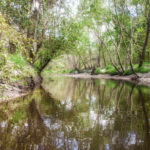 The original Alligator Creek ( North ) is a 6 1/2 mile long body of water, with it’s source about 4 miles East of Starke. The Creek flows in a southwesterly direction toward Lake Rowell, southwest of Starke, in Bradford County.
The original Alligator Creek ( North ) is a 6 1/2 mile long body of water, with it’s source about 4 miles East of Starke. The Creek flows in a southwesterly direction toward Lake Rowell, southwest of Starke, in Bradford County.

This Florida Paddle Notes category, Florida Creeks and Spring Runs, lists several creeks and runs explored by Florida Paddle Notes
 The original Alligator Creek ( North ) is a 6 1/2 mile long body of water, with it’s source about 4 miles East of Starke. The Creek flows in a southwesterly direction toward Lake Rowell, southwest of Starke, in Bradford County.
The original Alligator Creek ( North ) is a 6 1/2 mile long body of water, with it’s source about 4 miles East of Starke. The Creek flows in a southwesterly direction toward Lake Rowell, southwest of Starke, in Bradford County.
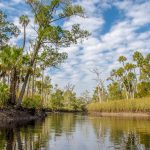 Otter Creek is an approximately 11-mile long creek, located in Levy County, 3 miles West of Gulf Hammock. Only the last 2 – 3 miles of the creek are navigable, toward the confluence with the Waccasassa River. The creek source is in the area of the town Otter Creek near Hwy 24 and Hwy 19. Otter Creek flows South until it merges with the Waccasassa River, which flows into the Gulf of Mexico just over 4 miles southeast, downriver…James
Otter Creek is an approximately 11-mile long creek, located in Levy County, 3 miles West of Gulf Hammock. Only the last 2 – 3 miles of the creek are navigable, toward the confluence with the Waccasassa River. The creek source is in the area of the town Otter Creek near Hwy 24 and Hwy 19. Otter Creek flows South until it merges with the Waccasassa River, which flows into the Gulf of Mexico just over 4 miles southeast, downriver…James
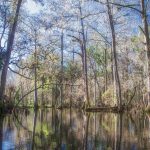 We launched on the southeast corner of the SR 20 Bridge, near Kate’s Fish Camp. It is a steep slope down to the water but there were no issues. As was the case for the two previous paddles over the last year and a half, the current was moving well and the water was high…James
We launched on the southeast corner of the SR 20 Bridge, near Kate’s Fish Camp. It is a steep slope down to the water but there were no issues. As was the case for the two previous paddles over the last year and a half, the current was moving well and the water was high…James
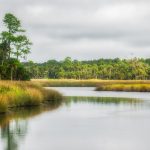 Bulow Creek is a State of Florida Canoe Trail. It is a shallow, meandering waterway, originating in the wetlands of Graham Swamp, West of the Intercoastal Waterway ( Matanzas River ). Bulow Creek flows South for most of it’s 9 mile length before turning eastward and flowing into the Halifax River. Here is a Bulow Creek Paddle Guide.
Bulow Creek is a State of Florida Canoe Trail. It is a shallow, meandering waterway, originating in the wetlands of Graham Swamp, West of the Intercoastal Waterway ( Matanzas River ). Bulow Creek flows South for most of it’s 9 mile length before turning eastward and flowing into the Halifax River. Here is a Bulow Creek Paddle Guide.
 The head spring, Salt Springs, gets its name from the magnesium, potassium, and sodium salts rising to the surface through ancient salt deposits. The spring is located in the town of Salt Springs. It is a second magnitude spring with a flow of over 60 cubic feet per second, having several vertical vents in a large shallow pool. Salt Springs Run is a major tributary to the St. Johns River…James
The head spring, Salt Springs, gets its name from the magnesium, potassium, and sodium salts rising to the surface through ancient salt deposits. The spring is located in the town of Salt Springs. It is a second magnitude spring with a flow of over 60 cubic feet per second, having several vertical vents in a large shallow pool. Salt Springs Run is a major tributary to the St. Johns River…James
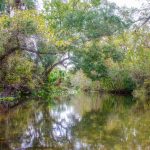 Rock Springs Run is located in Orange County, 5 miles northeast of Apopka, and 5 miles southeast of Sorrento, Fl. It is an 8-mile long run, forming the boundary between the 7,000 acre Wekiwa Springs State Park to the West and the 14,000 acre Rock Springs Run State Preserve to the North and East…James
Rock Springs Run is located in Orange County, 5 miles northeast of Apopka, and 5 miles southeast of Sorrento, Fl. It is an 8-mile long run, forming the boundary between the 7,000 acre Wekiwa Springs State Park to the West and the 14,000 acre Rock Springs Run State Preserve to the North and East…James
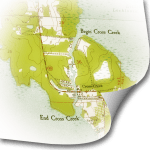 Cross Creek became well known due to the writings of author Marjorie Kinnan Rawlings. Moving to Cross Creek in 1928, Rawlings wrote stories that exposed her fondness of rural life at ‘The Creek’ often including characters based on her relationships with her neighbors. Her most famous book was the Pulitzer Prize-winning novel The Yearling, published in 1938....James
Cross Creek became well known due to the writings of author Marjorie Kinnan Rawlings. Moving to Cross Creek in 1928, Rawlings wrote stories that exposed her fondness of rural life at ‘The Creek’ often including characters based on her relationships with her neighbors. Her most famous book was the Pulitzer Prize-winning novel The Yearling, published in 1938....James
 It’s been a year this month that Hurricane Irma and associated storms flooded Prairie Creek. This year, comparing photos, the water level is about 1 1/2′ lower but still high and flowing…James
It’s been a year this month that Hurricane Irma and associated storms flooded Prairie Creek. This year, comparing photos, the water level is about 1 1/2′ lower but still high and flowing…James
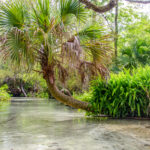 Juniper Creek – Upper is a 7-mile winding waterway originating from Juniper Springs in the Ocala National Forest, Marion County. The creek flows through several sections of beautiful, diverse forest and wilderness eventually flowing into the St. Johns River…James
Juniper Creek – Upper is a 7-mile winding waterway originating from Juniper Springs in the Ocala National Forest, Marion County. The creek flows through several sections of beautiful, diverse forest and wilderness eventually flowing into the St. Johns River…James
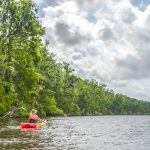 Dunns Creek is rather wide for a creek, ranging from 275′ – 500′. The easterly side of the creek is populated for almost the last 1/2 of the distance, while the westerly side includes sandhills and wetlands. Among several protected species are the Gopher Tortoise – Gopherus Polyphemus and Fox Squirrel – Sciurus niger. During the last century, the area was used for turpentine logging, cattle ranching, and farming. The numerous shell mounds show evidence the area was inhabited by Native Americans…James
Dunns Creek is rather wide for a creek, ranging from 275′ – 500′. The easterly side of the creek is populated for almost the last 1/2 of the distance, while the westerly side includes sandhills and wetlands. Among several protected species are the Gopher Tortoise – Gopherus Polyphemus and Fox Squirrel – Sciurus niger. During the last century, the area was used for turpentine logging, cattle ranching, and farming. The numerous shell mounds show evidence the area was inhabited by Native Americans…James